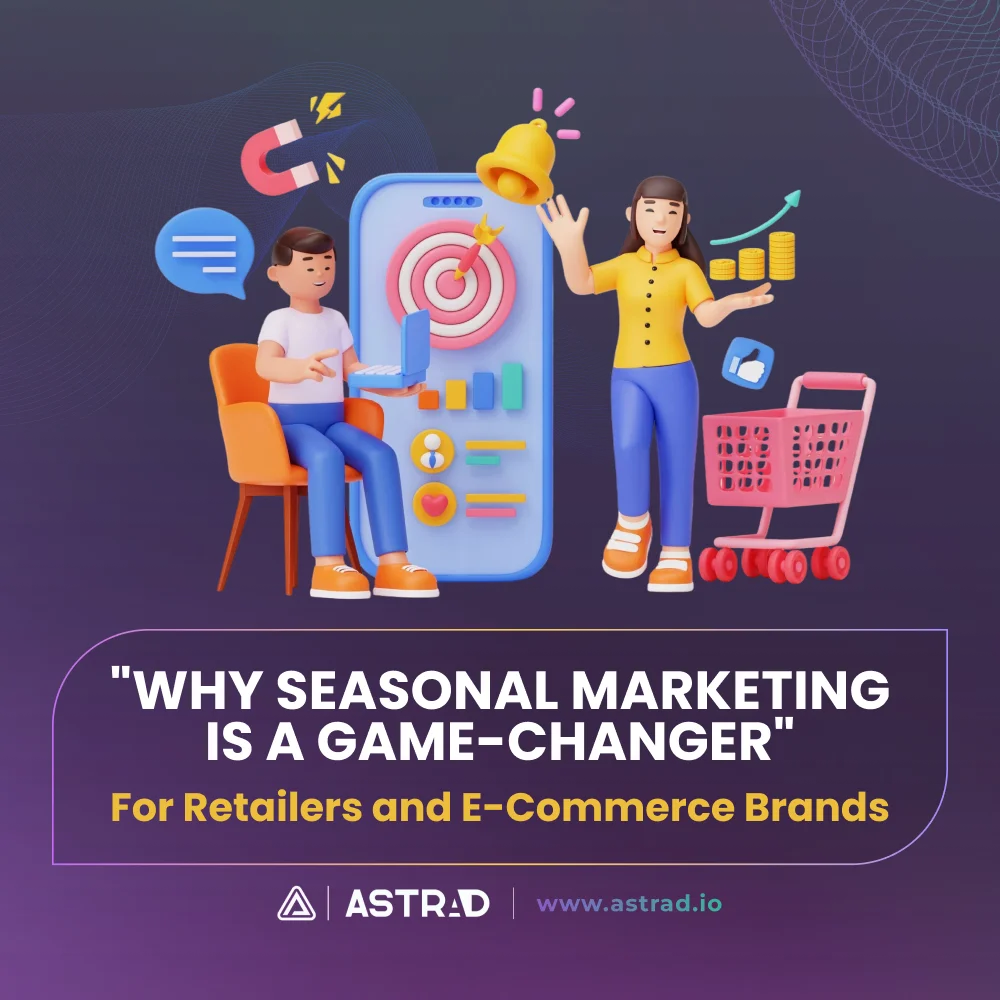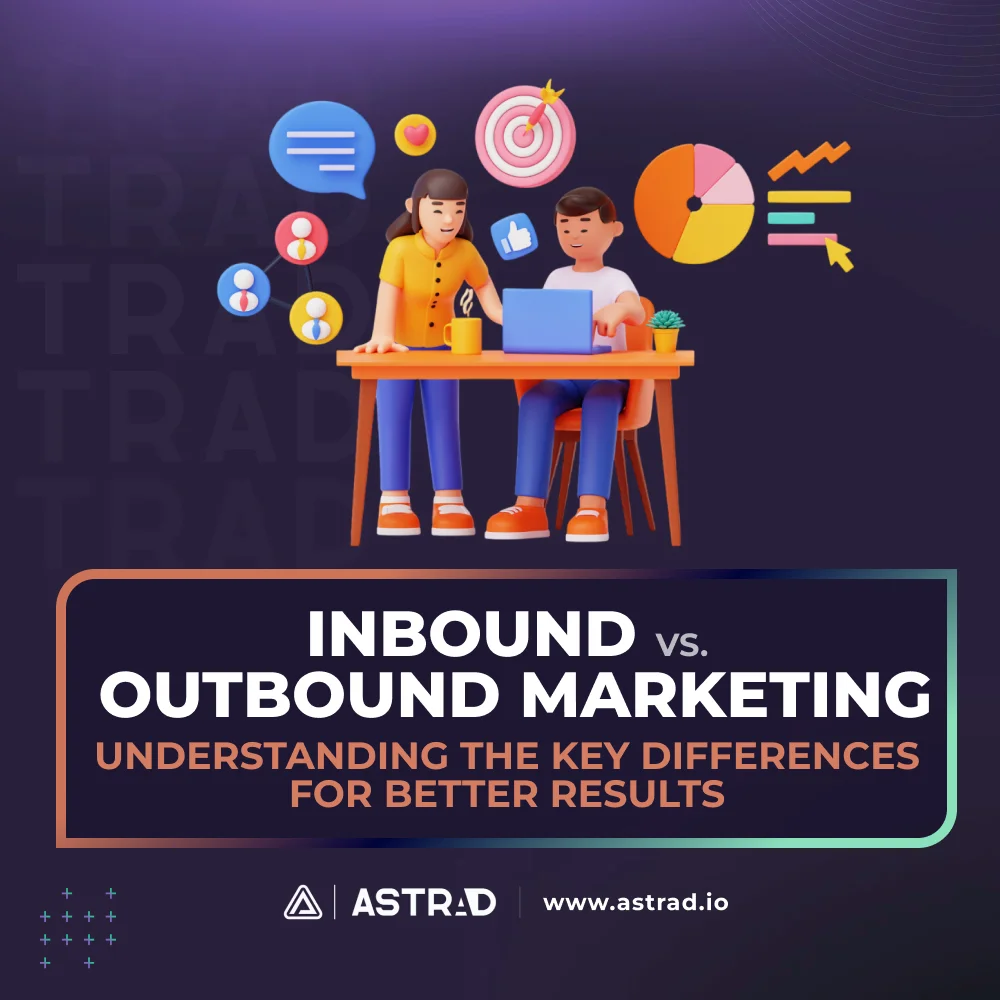Remember that feeling when you walk into a store in October and suddenly—boom—Halloween decorations everywhere? Or when your inbox starts filling with “Black Friday Coming Soon!” emails before you’ve even digested your Thanksgiving turkey? That’s seasonal marketing at work, and it’s not just random timing—it’s strategic brilliance.
In the cutthroat arena of retail and e-commerce, where brands battle for consumer attention like gladiators in a digital Colosseum, seasonal marketing isn’t just another tactic—it’s the secret weapon that separates the winners from the also-rans. It’s about riding the waves of consumer behavior instead of swimming against them.
The Importance of Timing in Marketing
Timing isn’t just important in comedy—it’s everything in marketing. Think about it: trying to sell swimwear in December is like trying to peddle umbrellas on a sunny day. You might make a few sales to Caribbean-bound vacationers, but you’re missing the tsunami of summer shoppers who are actually in the market.
Seasonal marketing is the art of synchronizing your brand’s rhythm with your customer’s natural buying cycles. When you nail the timing, your marketing message doesn’t feel like an interruption—it feels like the answer to a question they were just about to ask. It’s the difference between shouting at someone in the street versus tapping them on the shoulder when they’re looking for directions.
And in today’s hypercompetitive marketplace, where consumer attention is the scarcest resource? That perfect timing isn’t just nice to have—it’s the difference between thriving and barely surviving.
What is Seasonal Marketing? The Strategic Rhythm of Retail
Seasonal marketing isn’t just slapping a pumpkin on your logo in October or turning everything red and green in December. It’s a sophisticated strategy that aligns your brand, products, and messaging with the natural ebbs and flows of consumer behavior throughout the year.
At its core, seasonal marketing is about recognizing that consumers don’t shop with the same intensity or focus all year round. Their needs, desires, and purchasing patterns shift with the seasons, holidays, and cultural events. Smart retailers don’t fight this tide—they ride it all the way to the bank.
But here’s where many brands miss the boat: seasonal marketing isn’t just about the obvious holidays. Sure, Christmas and Black Friday are retail juggernauts, but what about tax season for financial products? Wedding season for gift registries? Back-to-school for everything from laptops to lunch boxes? The calendar is rich with opportunities for those who know where to look.
Key Elements of Seasonal Marketing Campaigns
What separates a killer seasonal campaign from just another promotional blitz? It’s all about how you bring together these critical elements:
- Timely Relevance: Connecting your offer to a moment that matters in your customer’s life—whether that’s a major holiday, a seasonal change, or a personal milestone.
- Emotional Resonance: Tapping into the feelings associated with seasons and celebrations—nostalgia, joy, excitement, or even the stress of holiday shopping.
- Limited Availability: Creating a sense of scarcity and urgency through time-limited offers or seasonal exclusives that won’t be available “once the season ends.”
- Visual Transformation: Refreshing your brand’s look and feel to reflect the season—from website design to packaging and in-store displays.
Types of Seasonal Campaigns That Drive Results
The seasonal marketing landscape offers a rich variety of campaign types, each with its own rhythm and purpose:
- Holiday Promotions: The heavy hitters—Christmas, Halloween, Valentine’s Day—where consumer spending reaches its peak. These are the Super Bowls of retail, where planning starts months in advance and execution must be flawless.
- Seasonal Transitions: The shift from winter to spring, summer to fall—these natural transitions trigger specific purchasing behaviors, from wardrobe refreshes to home updates.
- Cultural Moments: From Super Bowl Sunday to Pride Month to Graduation Season—these cultural landmarks create shared experiences that smart brands can authentically join.
- Limited-Edition Releases: Seasonal products or special collections that create buzz and drive urgency—think Pumpkin Spice Everything or Summer-Only flavors.
The Power of Marketing Seasonality for Retailers and E-Commerce Brands
Marketing seasonality isn’t just a concept—it’s a force of nature in the retail world. Understanding and harnessing seasonality is like learning to predict the weather; it gives you an edge that no amount of clever copywriting or flashy design can replace.
For retailers and e-commerce brands, seasonality isn’t just about riding waves of demand—it’s about creating tidal surges of sales when executed with precision and insight.
Understanding Marketing Seasonality
Marketing seasonality refers to those predictable fluctuations in consumer demand throughout the year. It’s the reason why gyms are packed in January and swimsuit sales spike in May. It’s why Q4 can make or break a retailer’s entire year, and why some businesses actually plan to lose money during their off-seasons.
But here’s the thing—seasonality varies dramatically across industries and product categories. A tax preparation service experiences peak season when a swimming pool supplier faces its slowest months. A brand selling school supplies sees a major spike in August, while a company selling holiday decorations might make 80% of its annual revenue in November and December.
The brands that win don’t just acknowledge these patterns—they build their entire business models around them, from inventory planning to cash flow management to marketing budgets.
Psychology Behind Seasonal Purchases
Consumer behavior during seasonal peaks isn’t random—it’s driven by powerful psychological triggers that marketers can leverage:
- Emotional Associations: Seasons and holidays come pre-loaded with emotional connections. Christmas brings feelings of nostalgia and generosity, while spring triggers desires for renewal and fresh starts.
- Social Proof and FOMO: When everyone’s talking about Black Friday deals or Valentine’s Day gifts, consumers don’t want to miss out on what seems like a universal experience.
- Permission to Indulge: Holidays and special occasions give consumers psychological permission to spend in ways they normally wouldn’t—whether that’s splurging on gifts for others or treating themselves.
- Deadline Pressure: Seasonal windows create natural urgency—Christmas has a non-negotiable deadline, and summer fashions have a clear expiration date in terms of relevance.
Capitalizing on Customer Expectations
The magic happens when retailers align their offerings with these seasonal expectations rather than fighting against them:
Smart retailers don’t just react to seasonal demand—they anticipate it, shape it, and maximize it. They understand that customers aren’t just buying products; they’re buying solutions to seasonal challenges and opportunities to participate in cultural moments.
How Seasonal Marketing Drives Sales and Revenue
When executed correctly, seasonal marketing isn’t just a nice-to-have strategy—it’s a revenue-generating powerhouse that delivers measurable results.
Boosting Short-Term Sales
The most obvious benefit of seasonal marketing is the immediate sales lift. Seasonal campaigns can create dramatic spikes in revenue that far exceed normal business operations:
Black Friday isn’t just a big shopping day—it’s an economic phenomenon that can generate more revenue in 24 hours than some retailers see in an entire month. Valentine’s Day isn’t just February 14th—it’s a $20+ billion spending spree on everything from chocolates to jewelry to experiences.
These aren’t just incremental gains; they’re seismic shifts in consumer spending that can transform a company’s financial outlook overnight.
Increasing Brand Awareness
Seasonal moments offer rare opportunities to break through the noise and reach new customers who might otherwise never encounter your brand:
When everyone’s in shopping mode for a specific occasion, they’re more receptive to discovering new brands. A well-timed seasonal campaign can put your brand on the radar of consumers who weren’t actively looking for you—but who become long-term customers after that initial seasonal purchase.
Leveraging Limited-Time Offers for Urgency
Nothing motivates action like a deadline, and seasonal marketing is built on natural deadlines:
- “Order by December 15th for guaranteed Christmas delivery”
- “Summer collection—while supplies last”
- “Tax season special pricing ends April 15th”
These time-bound offers create urgency that overcomes procrastination and price sensitivity. When customers know they can’t just “think about it” indefinitely, decision paralysis melts away.
Seasonal Marketing Campaign Strategies for Retailers and E-Commerce Brands
Success in seasonal marketing doesn’t happen by accident. It requires strategic planning, precise execution, and the ability to stand out in increasingly crowded seasonal marketplaces.
Here’s how to build seasonal campaigns that don’t just participate—they dominate:
Planning and Timing Your Campaigns
The early bird doesn’t just get the worm in seasonal marketing—it gets the customer’s wallet before competitors even show up:
Planning a major seasonal campaign isn’t a week-before affair—it’s a months-long strategic initiative. Major retailers start planning their Christmas campaigns in January, not November. They secure inventory, develop creative concepts, and map out promotional calendars while last year’s holiday decorations are still being packed away.
This long-view approach isn’t just about being prepared—it’s about being first. The brands that reach consumers early in their seasonal decision-making process gain a tremendous advantage:
- They capture the budget before competitors
- They establish price expectations for the season
- They gain valuable early data to optimize later-season tactics
- They secure prime advertising placements before rates increase
For e-commerce brands, in particular, this early planning is crucial for managing supply chain challenges and shipping deadlines—issues that can make or break a seasonal campaign.
Personalization in Seasonal Campaigns
The most powerful seasonal marketing doesn’t just acknowledge the season—it acknowledges the individual customer and their unique relationship with that season:
Not all holiday shoppers are created equal. Some start in October, while others scramble on December 23rd. Some have unlimited gift budgets, while others count every penny. Some embrace seasonal traditions, while others seek alternative celebrations.
Modern seasonal marketing uses data-driven personalization to address these differences:
- Targeting early-bird shoppers with exclusive previews and first-access
- Creating specialized messaging for last-minute shoppers emphasizing expedited shipping
- Developing budget-conscious options alongside premium offerings
- Tailoring recommendations based on past seasonal purchasing behavior
This personalized approach transforms generic seasonal promotions into relevant, timely offers that feel custom-made for each customer.
Multichannel Seasonal Marketing
Today’s consumers don’t experience seasons through just one channel—they move seamlessly between social media, email, websites, and physical stores. Effective seasonal marketing creates a cohesive experience across all these touchpoints:
Your seasonal marketing should tell one consistent story across all channels, but adapt that story to each channel’s unique strengths:
- Email for personalized offers and cart abandonment recovery
- Social media for seasonal inspiration and trend participation
- Website for immersive seasonal experiences and easy purchasing
- Paid search for capturing high-intent seasonal queries
- Physical stores (if applicable) for creating memorable seasonal atmospheres
The brands that win don’t silo their seasonal efforts—they orchestrate them into a symphony where each channel plays its part in a harmonious whole.
Seasonal Product Bundles and Exclusive Products
Want to increase both average order value and seasonal urgency? Limited-time products and bundles are your secret weapon:
Seasonal exclusives tap into the powerful consumer desire for unique, limited-edition items that won’t be available indefinitely. From pumpkin spice lattes to holiday gift sets, these offerings create natural urgency—consumers know that when the season ends, so does their chance to purchase.
Strategic bundling serves multiple purposes during seasonal peaks:
- Increasing average order value by combining complementary products
- Simplifying decision-making for overwhelmed seasonal shoppers
- Creating compelling gift options at key price points
- Moving excess inventory alongside high-demand seasonal items
For e-commerce brands facing intense seasonal competition, these exclusive offerings provide a competitive advantage that price-matching can’t overcome.
Making Seasonal Marketing Your Competitive Advantage
Seasonal marketing isn’t just about holiday promotions—it’s a strategic advantage that positions proactive retailers ahead of their competitors. By planning months in advance and creating meaningful seasonal experiences, brands become essential parts of their customers’ traditions rather than just another shopping option.
The most effective approach views seasonal marketing as a year-round strategy, not isolated events. Smart retailers maintain engagement across all seasonal touchpoints, transforming one-time seasonal shoppers into loyal customers who return throughout the year.
In today’s fragmented marketplace, seasonal moments offer rare opportunities for focused customer attention. The difference between participating in seasonal events and strategically owning them is reflected directly in business results. By developing a comprehensive seasonal strategy, retailers can convert fleeting seasonal opportunities into sustainable success that extends well beyond the season itself.






